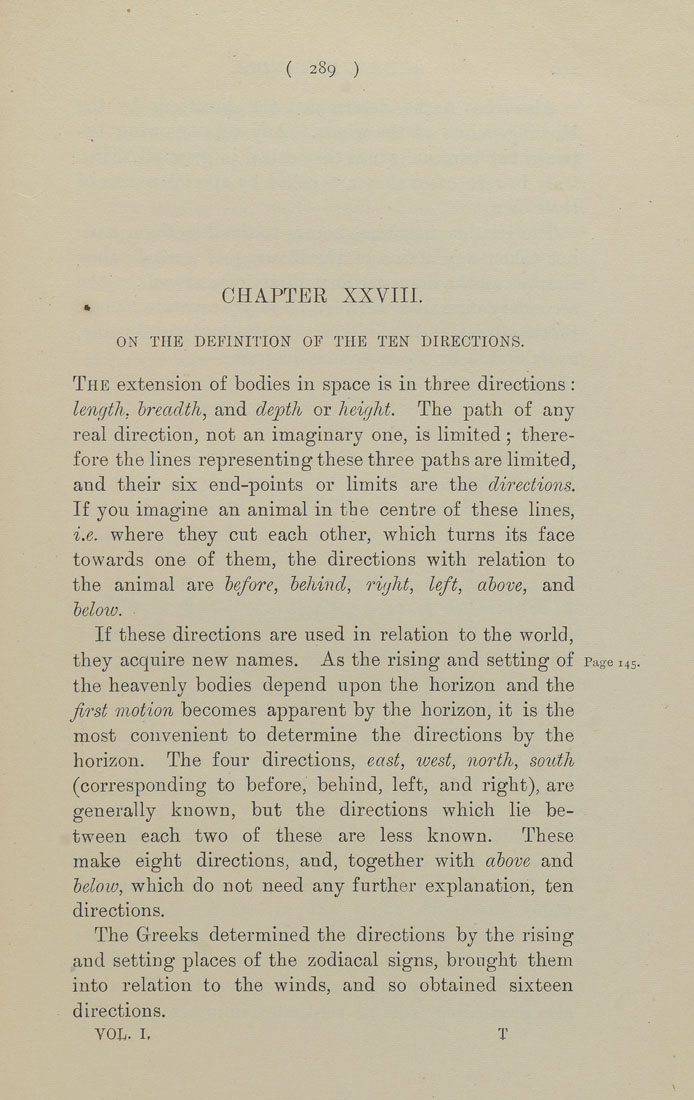Bīrūnī, Muḥammad ibn Aḥmad, Alberuni's India (v. 1)
(London : Kegan Paul, Trench, Trübner & Co., 1910.)
|
||
|
|
|
|
| Page 289 |

( 289 ) CHAPTER XXVIII. ON THE DEFINITION OF THE TEN DIRECTIONS. The extension of bodies in space is in three directions: length, breadth, and depth or height. The path of any real direction, not an imaginary one, is limited; there¬ fore the lines representing these three paths are limited, and their six end-points or limits are the directions. If you imagine an animal in the centre of these lines, i.e. where they cut each other, which turns its face towards one of them, the directions with relation to the animal are before, behind, right, left, above, and below. If these directions are used in relation to the world, they acquire new names. As the rising and setting of Page 145. the heavenly bodies depend upon the horizon and the first motion becomes apparent by the horizon, it is the most convenient to determine the directions by the horizon. The four directions, east, west, north, south (corresponding to before, behind, left, and right), are generally known, but the directions which lie be¬ tween each two of these are less known. These make eight directions, and, together with above and below, which do not need any further explanation, ten directions. The Greeks determined the directions by the rising aud setting places of the zodiacal signs, brought them into relation to the winds, and so obtained sixteen directions. VOL. I. T |
| Page 289 |







